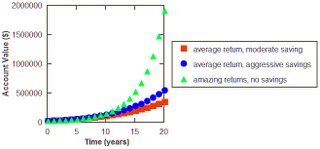I'm glad to announce that I'm starting a new portfolio. This will cover the 'special siutations' that I learned about in 'You Can Be A Stock Market Genius.' A few things fell into place to convince me that the time was right, and that it could be worthwhile. I discussed LPMA in my last post. Everything seems good (more checking to do, but so far...) so I bought today ahead of PAY (the acquirer) announcing earnings.
On top of that, there's the ACV spin-off that I still haven't completely figured out (I think that it will take their last SEC filing prior to the spin-off for that).
And today, senatornovus of the MFI group started a yahoo group dedicated to the special situations described by Greenblatt. I've already learned that Sara Lee will be spinning off Hanes (the underwear and apparel brand). This looks like a classic Greenblatt-style spin off, and may very well be a good value investment play. A post elsewhere (that I haven't yet confirmed the facts of) suggests that the officers of the new company will stand to benefit from share price being low initially. So they're making it unappealing to mutual funds and other large investors, which should trigger a massive sell-off in the first little while. This should depress the price unreasonably, and make Hanes a very attractive investment. We'll see.
In other news, I panicked a little and sold MEDX when it was announced that they might default on convertible notes. I think that it was a panic move because it looks as though they've got the cash on hand to cover the debt. But, I wanted to lock in my 12% gains. Medarex is a pretty reasonable long-term investment with several products in late-phase clinical trials and a strong pipeline. We'll just have to see tomorrow morning. I might change my mind about this move, and I might be kicking myself. As an aside, the low trading fees of MBTrading is the only thing that makes this possible; otherwise I definitely would have stuck it out.








